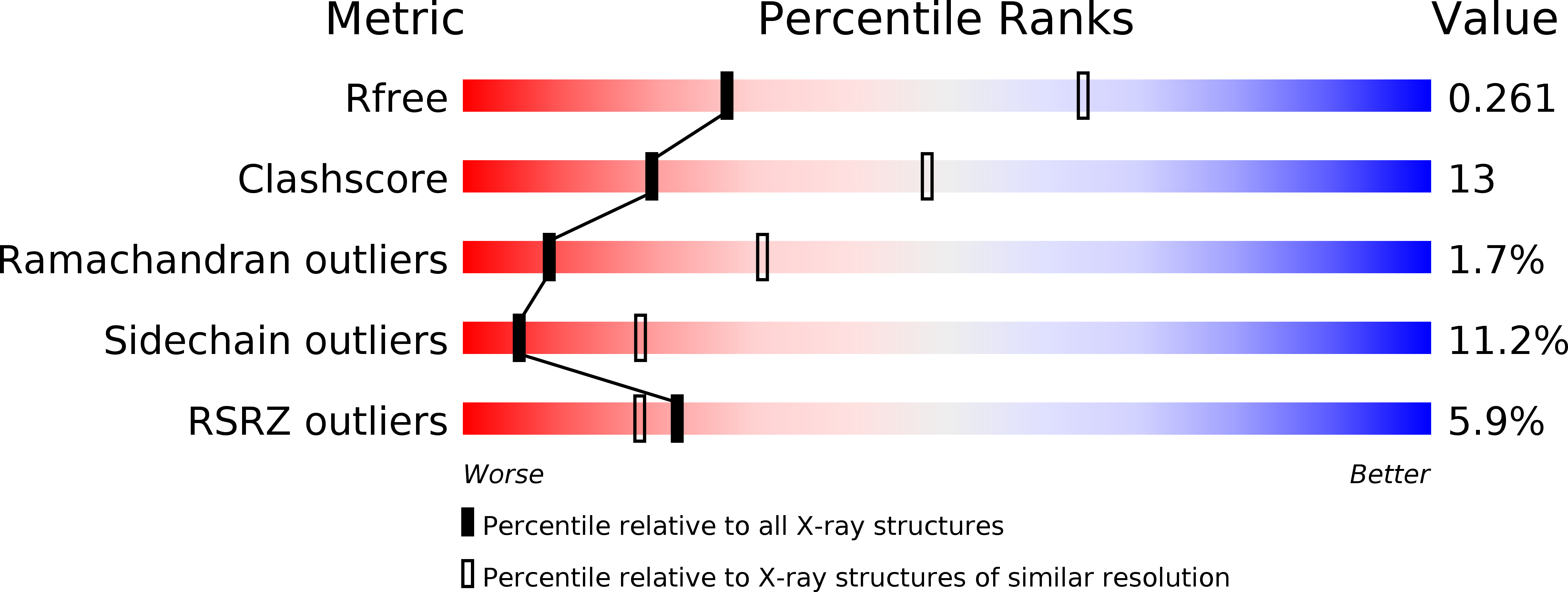
Deposition Date
2012-07-20
Release Date
2012-08-29
Last Version Date
2024-11-20
Entry Detail
PDB ID:
4G7W
Keywords:
Title:
Crystal structure of the N-terminal domain of the minor coat protein pIII from CTXphi
Biological Source:
Source Organism:
Vibrio cholerae (Taxon ID: 661513)
Host Organism:
Method Details:
Experimental Method:
Resolution:
2.90 Å
R-Value Free:
0.26
R-Value Work:
0.23
R-Value Observed:
0.23
Space Group:
P 63 2 2


